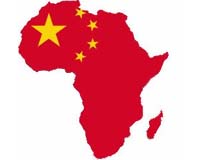| . |  |
. |
Lagos (AFP) March 7, 2010 Mobile phones may be a key weapon in the war against HIV and AIDS in Africa, says to the UNAIDS chief. The relatively new technology has a role to play in a continent plagued by inadequate health centres and dilapidated infrastructure, said Michel Sidibe, the executive director of the United Nations AIDS agency. "You can talk about different policies, about capacity building, but you can't beat this kind of epidemic with facility-based approach only," he added. A major mobile telephone operator in Nigeria already runs a toll-free call scheme that links callers to counsellors on HIV-AIDS concerns. "It's a fascinating initiative," said Sidibe. "Its advantage is that you don't have to move from your place to a centre where... you may be stigmatised. "You have free communication and quality advice, which can help you take a decision." With basic intensive training and armed with mobile phones, local community or village workers could be a part of the health service delivery system, he said. For despite the resources poured in years into Sub-Saharan Africa to combat HIV-AIDS, the region remains the world's most heavily affected, accounting for 67 percent of HIV infections, according to UNAIDS' own figures. "You need first to look at a community-based approach, tap on non-conventional facilities," Sidibe told AFP during a recent trip to Nigeria. It was time that Africa, saddled with a myriad of economic, political and social woes, got back to basics, he argued. "I don't think in any of our African countries we will be able to wait to have professionals, or to have enough of those people." "It is time to reinforce our capacity to use the modern technology differently," he said. Africa, a continent with one of the highest numbers with access to cellular phones, should take advantage of the digital revolution to reach out widely, he said. "It's something we need to start replicating in Africa, remember we have more mobile phones in African than in north America," he added. Nigeria has more than 70 million cellphone line subscribers: about one line for every two people. A pilot project using cellphones is underway in the Nigeria's northern Kaduna State and southwestern Ondo State. Village workers -- who have barely been through secondary school -- have been trained to identify symptoms of minor ailments. They tour villages examining patients and use their mobile phones to call up trained medical workers at a major referral centre to get diagnosis and prescriptions dictated over the phone. "Community health workers go out with a mobile phone connected to a central referral hospital, can take temperatures... and doctors at the referral units advise on drugs to administer," said Sidibe. "Using all these types of approaches can help us improve information systems and expand delivery by reaching the poor in the community," he said. Despite prevention measures, which he said had helped avert 400,000 new infections in the past eight years on the continent, sub-Saharan Africa had the highest number of new infections in 2008. The rate runs at 71 percent according to UNAIDS. Most of those infected were sex workers, drug users and homosexual males. About three million Nigerians, or just under five percent of Africa's most populous nation are infected with HIV. Sidibe said he visited Nigeria and South Africa because the two economic giants account for more than 50 percent of all HIV cases in Africa.
Share This Article With Planet Earth
Related Links Africa News - Resources, Health, Food
 China defends growing links with Africa
China defends growing links with AfricaBeijing (AFP) March 7, 2010 China rejected foreign concerns over its growing energy links with Africa on Sunday, saying it benefits African nations by bringing badly needed trade and infrastructure development. "I have noticed that in the international community there are some who do not want to see the development of Sino-African relations and always make an issue of China-Africa energy cooperation," Foreign Minister ... read more |
|
| The content herein, unless otherwise known to be public domain, are Copyright 1995-2010 - SpaceDaily. AFP and UPI Wire Stories are copyright Agence France-Presse and United Press International. ESA Portal Reports are copyright European Space Agency. All NASA sourced material is public domain. Additional copyrights may apply in whole or part to other bona fide parties. Advertising does not imply endorsement,agreement or approval of any opinions, statements or information provided by SpaceDaily on any Web page published or hosted by SpaceDaily. Privacy Statement |